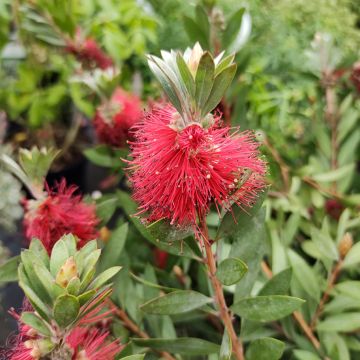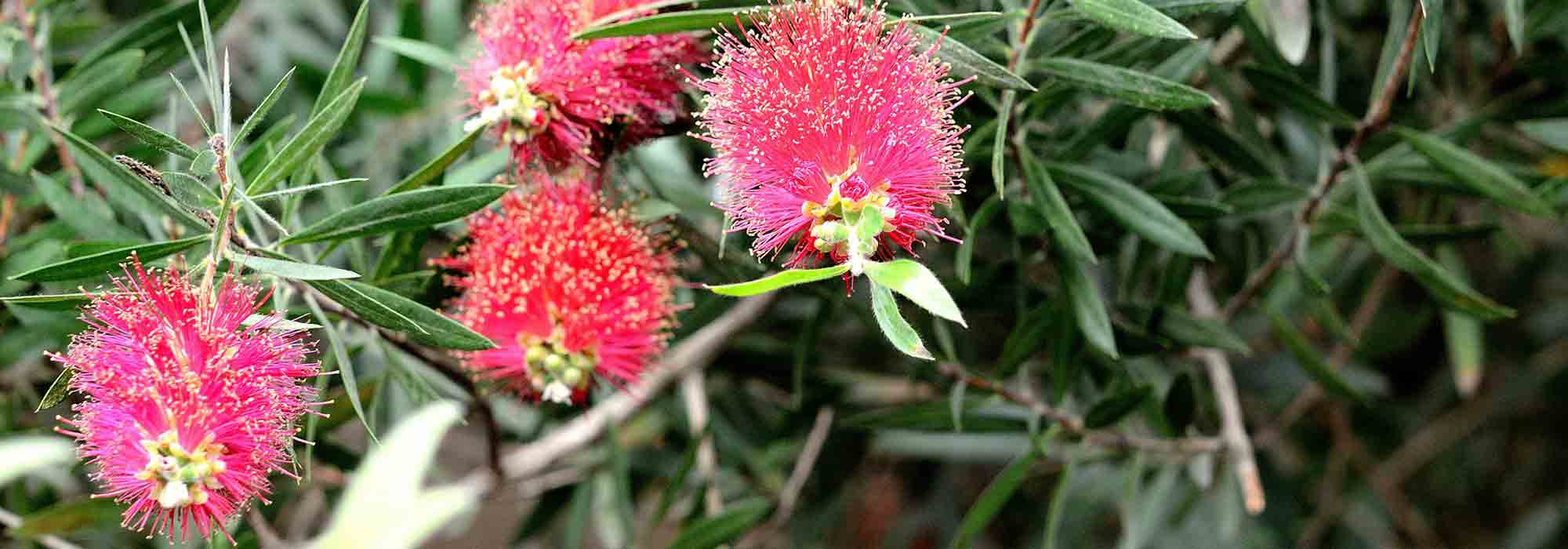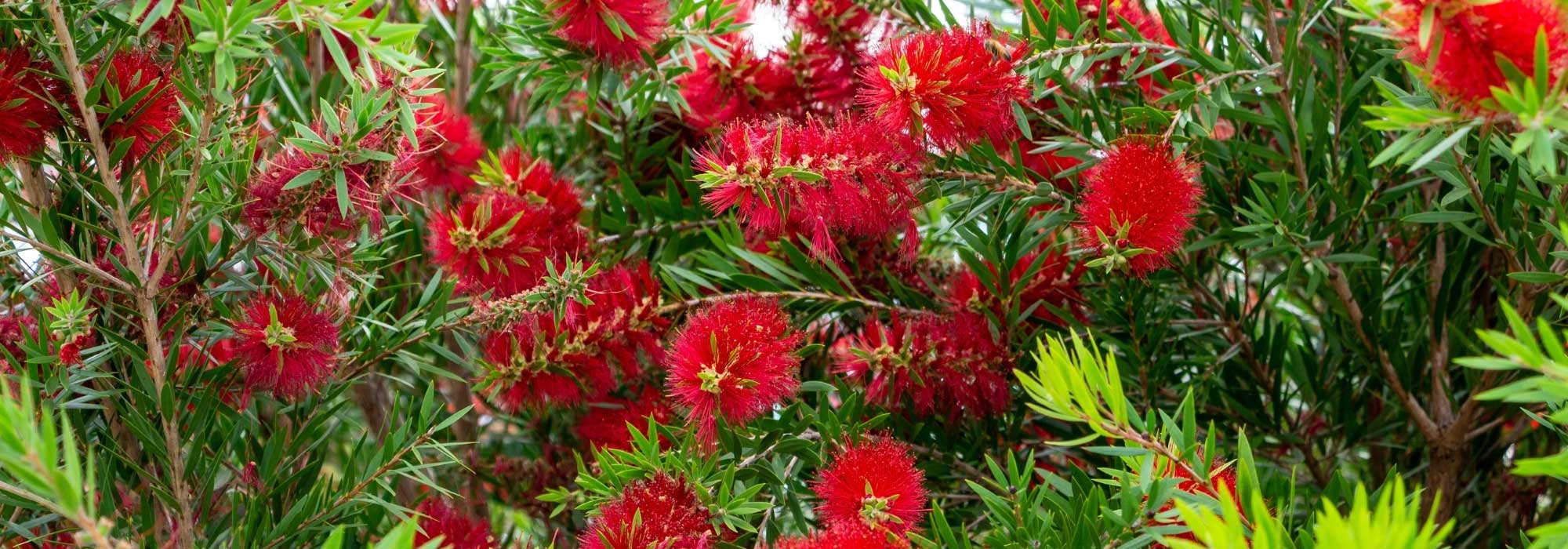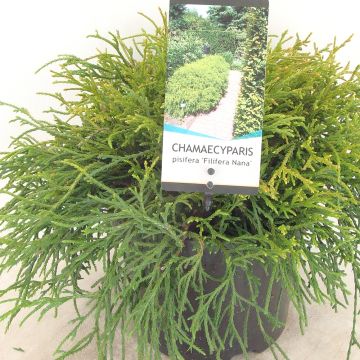

Callistemon viminalis Captain Cook - Bottlebrush


Callistemon viminalis Captain Cook - Bottlebrush


Callistemon viminalis Captain Cook - Bottlebrush
Callistemon viminalis Captain Cook - Bottlebrush
Callistemon viminalis Captain Cook
Weeping Bottlebrush, Creek Bottlebrush
Hello, as usual, easy ordering, fast delivery, very well packaged and protected... and to top it off, young plant received in great condition and of a very nice size... thank you for your shipment!
Claude, 04/02/2022
Special offer!
Receive a €20 voucher for any order over €90 (excluding delivery costs, credit notes, and plastic-free options)!
1- Add your favorite plants to your cart.
2- Once you have reached €90, confirm your order (you can even choose the delivery date!).
3- As soon as your order is shipped, you will receive an email containing your voucher code, valid for 3 months (90 days).
Your voucher is unique and can only be used once, for any order with a minimum value of €20, excluding delivery costs.
Can be combined with other current offers, non-divisible and non-refundable.
Why not try an alternative variety in stock?
View all →This plant carries a 24 months recovery warranty
More information
We guarantee the quality of our plants for a full growing cycle, and will replace at our expense any plant that fails to recover under normal climatic and planting conditions.

Would this plant suit my garden?
Set up your Plantfit profile →
Description
Callistemon viminalis 'Captain Cook' is an interesting variety of Bottlebrush due to its small size, reaching an average height of 2 m (6 ft 7 in) with a spread of only 1 m (3 ft 3 in). This small tree, with its beautiful ornamental qualities, has a semi-weeping habit, fine and elegant evergreen foliage, and dazzling spring flowering in the form of bright red bottlebrush-like spikes. Depending on the climate, flowering can also occur in autumn. It is a fairly adaptable species, valuable for landscaping in mild climates. It can be planted in a row to form a screen, or even as a standalone specimen in a small garden. It is also a good conservatory plant in colder climates.
Callistemon viminalis, also known as Weeping Bottlebrush, is a large shrub from the myrtle family, related to myrtles and Leptospermum, native to southeastern Australia, specifically the states of New South Wales and Queensland, where it is commonly found growing along watercourses in partial shade. It can reach a height of 15 m (49 ft 2 in) in its natural environment, but in colder climates it rarely exceeds 7 m (23 ft) with a spread of 2 to 3 m (6 ft 7 in to 9 ft 10 in).
It is an evergreen shrub in mild climates, with brittle wood, forming a dense dome-shaped crown with trailing branches. It has a relatively fast growth rate. Its linear and narrow foliage is divided into leaflets measuring 2 to 8 cm (0.8 to 3.1 in) long, with a beautiful grey-green colour. In spring, young shoots tinted with red emerge at the end of the branches. Its axillary flowers are composed of very long bright red stamens, arranged in cylindrical spikes at the end of flexible young branches. These inflorescences are around 5 cm (2 in) in diameter and 7 cm (2.8 in) in length, and they droop slightly. The terminal bud repeatedly develops new leaves, then new spikes, while the old inflorescence produces small cup-shaped fruits. Flowering can occur multiple times during the season in cool soil and a warm climate, especially in late summer. Its grey-brown bark is fissured and decorative. It is also a plant that attracts many pollinating insects to the garden.
Hardy down to about -5 °C/-6 °C (23/21.2 °F), Callistemon viminalis tolerates summer drought once established, but appreciates regular watering in dry climates. In a greenhouse or conservatory, it can be combined with an orange tree, a Tibouchina, or a mimosa to create an extremely decorative quartet, evoking landscapes with exotic charm and scents. In mild climates, it can be used as a standalone specimen - it deserves it - as a free hedge or in the back of a border, even on the edge of a woodland. It can also be planted in an evergreen hedge, accompanied by a shrubby ceanothus ('Italian Skies', 'Concha', 'Puget Blue', 'Skylark', etc.), a spring-flowering broom, or oleanders ('Soleil Levant' or 'Provence'). Its good tolerance to salt allows for coastal exposure, facing the wind and sea spray.
Callistemon viminalis Captain Cook - Bottlebrush in pictures




Plant habit
Flowering
Foliage
Botanical data
Callistemon
viminalis
Captain Cook
Myrtaceae
Weeping Bottlebrush, Creek Bottlebrush
Cultivar or hybrid
Other Callistemon
View all →Planting and care
Callistemon viminalis will thrive in a light, well-drained, fertile, moist to dry soil in summer, even though it greatly appreciates watering to support its beautiful flowering. Loose soil, whether humus-rich, slightly rocky, or sandy, slightly acidic, neutral, or even slightly calcareous, will do. It tolerates sea spray well and tolerates poorly drained or heavy soils better than most other callistemon species. Plant it in September-October in a warm climate. It will flourish in full sun or partial shade and likes to have warm roots. Under these conditions, it is hardy down to -5 or -6 °C (23 or 21.2 °F) and can live for many years. Surround it with winter protection in colder regions, insulating it as much as possible from the cold. Place it in the warmest corner of the garden, in full sun against a south-facing wall. However, it will be essential, in regions further away from the sea, to cultivate it in a large pot for winter storage, in a bright but unheated space.
Pot cultivation:
Provide good drainage at the bottom of the pot, which should be of a large volume. Use a lightweight substrate, enriched with leaf compost, and apply a slow-release fertiliser in late winter and autumn. Water generously in summer, allowing the soil to dry out a little between waterings. The more you water, the more your callistemon will flower.
Planting period
Intended location
Care
Planting & care advice
-
, onOrder confirmed
Reply from on Promesse de fleurs
Similar products
Haven't found what you were looking for?
Hardiness is the lowest winter temperature a plant can endure without suffering serious damage or even dying. However, hardiness is affected by location (a sheltered area, such as a patio), protection (winter cover) and soil type (hardiness is improved by well-drained soil).

Photo Sharing Terms & Conditions
In order to encourage gardeners to interact and share their experiences, Promesse de fleurs offers various media enabling content to be uploaded onto its Site - in particular via the ‘Photo sharing’ module.
The User agrees to refrain from:
- Posting any content that is illegal, prejudicial, insulting, racist, inciteful to hatred, revisionist, contrary to public decency, that infringes on privacy or on the privacy rights of third parties, in particular the publicity rights of persons and goods, intellectual property rights, or the right to privacy.
- Submitting content on behalf of a third party;
- Impersonate the identity of a third party and/or publish any personal information about a third party;
In general, the User undertakes to refrain from any unethical behaviour.
All Content (in particular text, comments, files, images, photos, videos, creative works, etc.), which may be subject to property or intellectual property rights, image or other private rights, shall remain the property of the User, subject to the limited rights granted by the terms of the licence granted by Promesse de fleurs as stated below. Users are at liberty to publish or not to publish such Content on the Site, notably via the ‘Photo Sharing’ facility, and accept that this Content shall be made public and freely accessible, notably on the Internet.
Users further acknowledge, undertake to have ,and guarantee that they hold all necessary rights and permissions to publish such material on the Site, in particular with regard to the legislation in force pertaining to any privacy, property, intellectual property, image, or contractual rights, or rights of any other nature. By publishing such Content on the Site, Users acknowledge accepting full liability as publishers of the Content within the meaning of the law, and grant Promesse de fleurs, free of charge, an inclusive, worldwide licence for the said Content for the entire duration of its publication, including all reproduction, representation, up/downloading, displaying, performing, transmission, and storage rights.
Users also grant permission for their name to be linked to the Content and accept that this link may not always be made available.
By engaging in posting material, Users consent to their Content becoming automatically accessible on the Internet, in particular on other sites and/or blogs and/or web pages of the Promesse de fleurs site, including in particular social pages and the Promesse de fleurs catalogue.
Users may secure the removal of entrusted content free of charge by issuing a simple request via our contact form.
The flowering period indicated on our website applies to countries and regions located in USDA zone 8 (France, the United Kingdom, Ireland, the Netherlands, etc.)
It will vary according to where you live:
- In zones 9 to 10 (Italy, Spain, Greece, etc.), flowering will occur about 2 to 4 weeks earlier.
- In zones 6 to 7 (Germany, Poland, Slovenia, and lower mountainous regions), flowering will be delayed by 2 to 3 weeks.
- In zone 5 (Central Europe, Scandinavia), blooming will be delayed by 3 to 5 weeks.
In temperate climates, pruning of spring-flowering shrubs (forsythia, spireas, etc.) should be done just after flowering.
Pruning of summer-flowering shrubs (Indian Lilac, Perovskia, etc.) can be done in winter or spring.
In cold regions as well as with frost-sensitive plants, avoid pruning too early when severe frosts may still occur.
The planting period indicated on our website applies to countries and regions located in USDA zone 8 (France, United Kingdom, Ireland, Netherlands).
It will vary according to where you live:
- In Mediterranean zones (Marseille, Madrid, Milan, etc.), autumn and winter are the best planting periods.
- In continental zones (Strasbourg, Munich, Vienna, etc.), delay planting by 2 to 3 weeks in spring and bring it forward by 2 to 4 weeks in autumn.
- In mountainous regions (the Alps, Pyrenees, Carpathians, etc.), it is best to plant in late spring (May-June) or late summer (August-September).
The harvesting period indicated on our website applies to countries and regions in USDA zone 8 (France, England, Ireland, the Netherlands).
In colder areas (Scandinavia, Poland, Austria...) fruit and vegetable harvests are likely to be delayed by 3-4 weeks.
In warmer areas (Italy, Spain, Greece, etc.), harvesting will probably take place earlier, depending on weather conditions.
The sowing periods indicated on our website apply to countries and regions within USDA Zone 8 (France, UK, Ireland, Netherlands).
In colder areas (Scandinavia, Poland, Austria...), delay any outdoor sowing by 3-4 weeks, or sow under glass.
In warmer climes (Italy, Spain, Greece, etc.), bring outdoor sowing forward by a few weeks.





























































